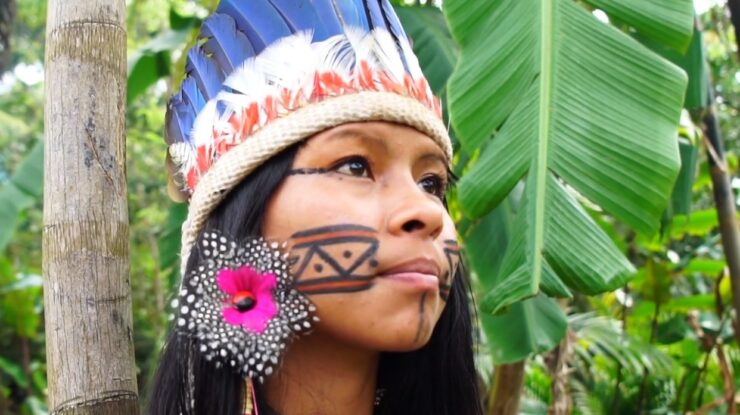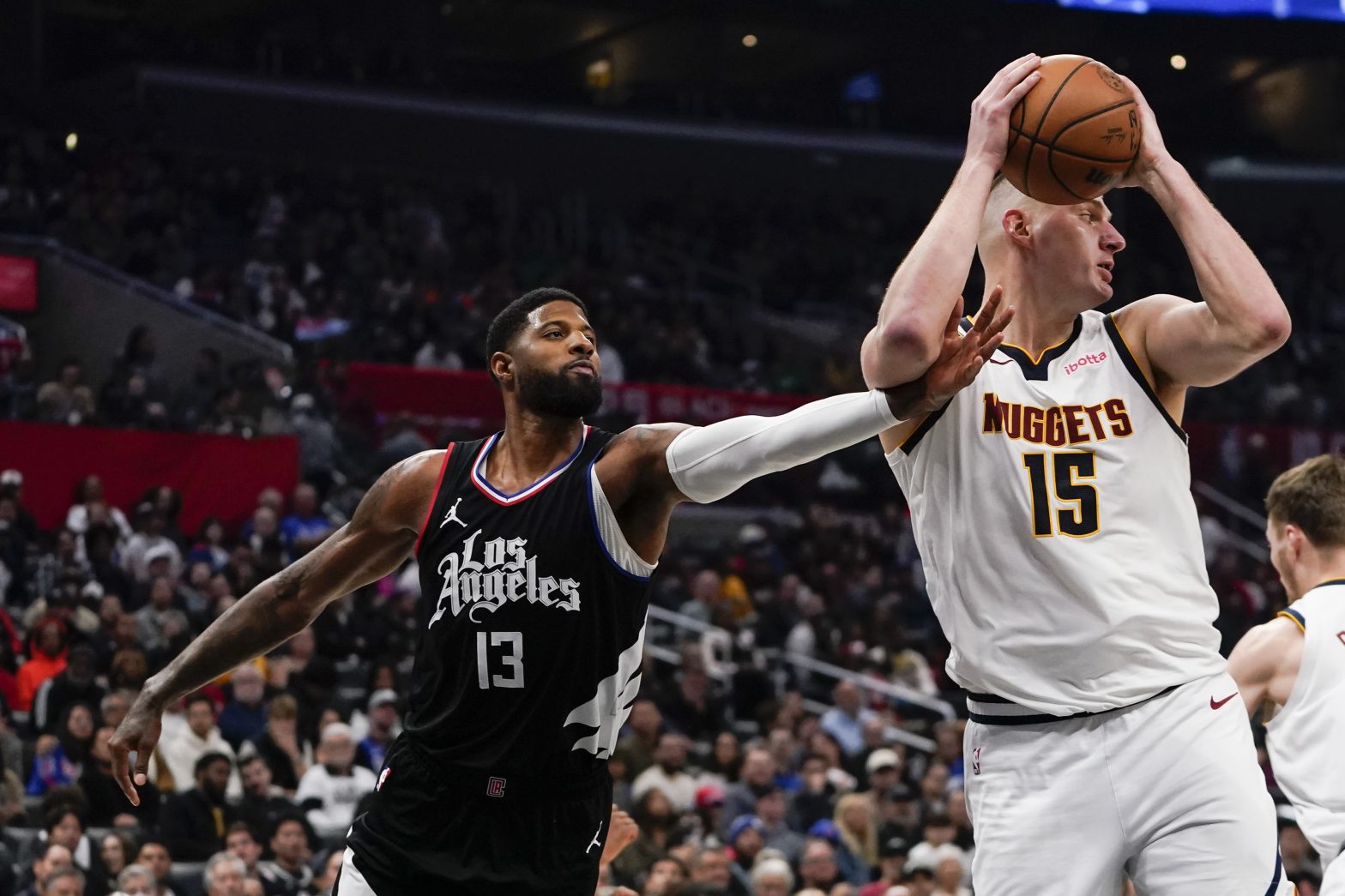The impact of cinema goes beyond mere entertainment. Films have the power to inform, evoke empathy, and initiate social change. For decades, Native American stories were either distorted or conspicuously absent in mainstream cinema.
However, in recent years, a new wave of filmmakers has begun to reshape that narrative, offering a more authentic look at Native American life, culture, and history. From heart-wrenching dramas to historically accurate accounts, Native American movies are making a mark. This blog post aims to take you on a tour of the 18 best Native American movies that every film enthusiast should see.
Whether you’re interested in Native American history, want to understand the struggles and triumphs of Indigenous communities, or are simply looking for some top-tier movies to add to your watchlist, this compilation has something for everyone.
17. “Rumble: The Indians Who Rocked The World” (2017)
This documentary by Catherine Bainbridge explores the influence of Native Americans in popular music history, including rock, blues, jazz, and hip-hop.
Did You Know?
- Influential Figures: Features Native American musicians like Link Wray, Jimi Hendrix, and Redbone.
- Awards: Winner of a Special Jury Award for Masterful Storytelling at the Sundance Film Festival.
Why Watch?
“Rumble” expands our understanding of Native American influence by diving into an often-overlooked area: music. It’s both educational and entirely entertaining.
16. “The Fast Runner” (2001)
Directed by Zacharias Kunuk, “The Fast Runner” is an Inuit film that retells an ancient Inuit legend. The film is groundbreaking for being the first feature film entirely in the Inuktitut language.
- Cultural Depth: Provides an immersive look into Inuit culture and tradition.
- Artistic Brilliance: Uses stunning visuals and unique storytelling methods.
Impact
This film not only captivated audiences but also gained critical acclaim, proving that stories from indigenous communities could have a global impact.
The Tale
The story follows Atanarjuat, a young Inuit hunter, as he battles an evil shaman for control over their tribe. The movie portrays ancient customs, survival skills, and Inuit folklore, encapsulating the struggle between good and evil in an arctic backdrop.
Accolades & Impact
“Atanarjuat: The Fast Runner” won the Camera d’Or at the 2001 Cannes Film Festival and has been recognized as one of Canada’s greatest films.
Beyond its awards, it served as a monumental step in indigenous filmmaking, creating a template for authentic storytelling.
15. “Winter in the Blood” (2013)
Adapted from the semi-autobiographical novel by Native American writer James Welch, this film, directed by Alex and Andrew Smith, delves into the life of a troubled Blackfeet man. The story unravels as he searches for his runaway wife but finds himself along the way.
Elements to Consider
- Strong Performances: Particularly by Chaske Spencer, who plays the lead role.
- Visual Style: The film captures the stark, icy Montana landscapes that reflect the protagonist’s internal turmoil.
Why It’s Important
“Winter in the Blood” offers an introspective look into the complexities of Native American life, making it a powerful piece for those interested in a deep, existential narrative.
14. “Powwow Highway” (1989)
Directed by Jonathan Wacks, “Powwow Highway” is a road trip movie that serves as a metaphorical journey into the heart of contemporary Native American life. The film follows two Cheyenne men as they travel from Montana to New Mexico.
Key Points
- Character Complexity: Each character represents different aspects of Native American life and identity.
- Cultural Specifics: The movie is loaded with references to tribal customs, spirituality, and the socio-political struggles facing Native Americans.
Don’t Miss It Because…
This film is a classic in Native American cinema for its rich storytelling, nuanced characters, and the adept way it intermingles humor with weighty cultural issues.
13. “Pathfinder” (2007)
Though it takes liberties with historical accuracy, “Pathfinder,” directed by Marcus Nispel, is an action film that features a Native American hero. The story revolves around a Viking boy left behind in North America who is adopted by a Native American tribe.
Entertainment Over Accuracy
While the film isn’t the best source for cultural or historical facts, it’s noteworthy for featuring a Native American protagonist in a Hollywood action setting.
Interpret with Caution
“Pathfinder” should be seen more as entertainment rather than an authentic representation of Native American culture or history. It sparks interest but should be complemented with more accurate educational resources.
12. “War Party” (1988)
“War Party,” directed by Franc Roddam, is a contemporary Western film that addresses issues of cultural heritage and land rights. Though it contains some dated elements, the film offers an early example of Hollywood attempting to navigate Native American themes more respectfully.
The Story
Set in modern-day Montana, the film focuses on a reenactment of a battle between U.S. Cavalry and Blackfoot Indians that turns real when a group of young Native men find themselves at odds with racist townsmen.
Relevance
Despite its 1980s trappings, “War Party” remains relevant today as it touches upon issues of historical trauma and racial tensions that are still present in America.
11. “The Revenant” (2015)
Though “The Revenant” primarily follows frontiersman Hugh Glass, portrayed by one of the most famous people in the world, Leonardo DiCaprio, the film also includes a subplot concerning the Arikara tribe. Directed by Alejandro González Iñárritu, this survival drama won several Academy Awards.
Cultural Insights
Though some critics argue that the film falls into the trap of romanticizing Native American culture, it also offers insights into the struggles faced by indigenous people during American expansion.
Native Participation
The film involved Native American consultants and included Native actors in the cast, making efforts toward authenticity in its portrayal of Arikara culture and language.
10. “Te Ata” (2016)
“Te Ata,” directed by Nathan Frankowski, is based on the true story of Mary Thompson Fisher, a Chickasaw storyteller best known by her stage name, Te Ata. Her performances helped to popularize Native American folklore during the 20th century.
What Makes It Special
The film stands out for its focus on a female protagonist who defied societal norms to become a cultural ambassador for Native American communities. It’s a tale of resilience, strength, and the power of storytelling.
Educational and Inspirational
This biopic serves as both a history lesson and an inspirational tale. It educates viewers about the significance of oral storytelling traditions in Native American culture while also providing a female role model in Te Ata.
9. “The Lesser Blessed” (2012)
Directed by Anita Doron and based on a novel by Richard Van Camp, a Tłı̨chǫ writer from Canada, “The Lesser Blessed” navigates the complicated life of a Native teenager living in the Northwest Territories.
Family and Identity
The film’s protagonist, Larry Sole, deals with a traumatic past, a complicated home life, and the challenges of adolescence. At its core, the movie is about the search for identity amidst complicated family dynamics and modern challenges.
Significance
What makes “The Lesser Blessed” special is its focus on contemporary Native life, filling a gap often missing in the broader narrative, which usually concentrates on historical or rural settings.
8. “Bury My Heart at Wounded Knee” (2007)
Based on the award-winning book by Dee Brown, this HBO film directed by Yves Simoneau delves into the events leading up to the Wounded Knee Massacre in 1890.
Notable Performances
Adam Beach, Aidan Quinn, and Anna Paquin give standout performances. Adam Beach, in particular, plays Sioux doctor Charles Eastman, capturing the tension of being caught between two worlds.
Relevance and Reflection
The film gives an emotionally wrenching view of a dark chapter in Native American history. While some may critique its heavy focus on Euro-American perspectives, the movie still serves as a sobering reminder of the atrocities committed against Native Americans.
7. “Thunderheart” (1992)
“Thunderheart” is a conspiracy thriller that meshes politics with mysticism. Directed by Michael Apted, the film stars Val Kilmer and explores the tensions between Oglala Lakota people in South Dakota and corrupt FBI agents.
Film Features
- Political Undertones: Inspired by real events, including the Wounded Knee incident in 1973.
- Cultural Exploration: Delves into the spiritual and cultural aspects of the Lakota people.
- Narrative Grip: Combines the pace of a thriller with a meaningful exploration of Native American life.
Impact and Reception
Though made by non-Native filmmakers, “Thunderheart” won appreciation for its nuanced approach to indigenous themes. It offers an entry point for audiences to start questioning and learning about Native American politics and spirituality.
6. “Rhymes for Young Ghouls” (2013)
Directed by Jeff Barnaby, a Mi’kmaq filmmaker, “Rhymes for Young Ghouls” is set in the 1970s on the fictional Red Crow Mi’kmaq reservation.
It serves both as a coming-of-age story and a dark commentary on the residential school system in Canada, where indigenous children were forcefully separated from their families and culture.
Key Characters
The film focuses on a gutsy teenage girl named Aila, who navigates life amidst crime, loss, and the oppressive agents of the state.
The movie has won praise for its complex characters and its powerful storytelling technique.
Why it’s a Must-Watch
“Rhymes for Young Ghouls” is a gritty film, full of dark themes and raw performances. It sheds light on the painful history and lingering effects of the residential school system— a topic that needs more attention and understanding.
5. “Skins” (2002)
Directed by Chris Eyre, who also helmed “Smoke Signals,” “Skins” offers a stark but essential look into life on the Pine Ridge Indian Reservation in South Dakota.
This drama doesn’t shy away from addressing issues like alcoholism, poverty, and the remnants of colonial trauma affecting Native American communities.
Story Essence
The movie follows Rudy Yellow Lodge, an Oglala Lakota tribal police officer, who is torn between his duty and his love for his problematic brother, Mogie. The film uses the relationship between the brothers as a lens to examine broader issues affecting the community.
The Takeaway
“Skins” offers an unflinching look at problems that are often kept out of mainstream discussions. While it is a challenging film to watch, its story is crucial for understanding the dire circumstances many Native Americans still face today.
4. “Wind River” (2017)
Directed by Taylor Sheridan, “Wind River” is a modern-day crime thriller that explores the investigation of a murder on the Wind River Indian Reservation in Wyoming.
The film stars Jeremy Renner and Elizabeth Olsen and features Gil Birmingham in a noteworthy role as a grieving Native American father.
Themes & Relevance
The film tackles the grim realities of life on some reservations and highlights issues like sexual assault, jurisdictional complications in crime investigation, and the socio-economic challenges faced by Native American communities.
The Dialogue it Started
“Wind River” isn’t just a suspenseful film; it’s also a starting point for discussions around the often-overlooked issue of violence against Native American women.
While it’s directed by a non-Native, the film has been noted for its respectful approach to cultural sensitivities and its effort to shed light on issues affecting Indigenous communities today.
3. “Dances With Wolves” (1990)
Kevin Costner’s “Dances With Wolves” was a commercial and critical success, earning seven Academy Awards, including Best Picture.
Its scale, budget, and influence make it a milestone in how Native American stories are told in Hollywood.
The Story
Set in the Civil War era, the movie follows Lieutenant John Dunbar, who becomes an honorary member of a Sioux tribe.
While some have criticized the film for its “white savior” narrative, it was groundbreaking at the time for humanizing Native Americans, who were often stereotyped as villains in Western films.
Cultural Impact
- Dialogue: Much of the movie’s dialogue is in the Lakota language, introducing audiences to Native American languages.
- Consultation: The film included Native American advisors for cultural and linguistic accuracy.
Legacy: Despite its flaws, “Dances With Wolves” significantly impacted how Native Americans are represented in mainstream cinema.
2. “The New World” (2005)
Directed by Terrence Malick, “The New World” is a visually stunning, poetic film that presents the story of Pocahontas and her encounters with John Smith and John Rolfe.
Though it’s a Hollywood production, the film takes extra care to portray Native American culture in a nuanced and historically grounded manner.
The Characters
Q’orianka Kilcher’s portrayal of Pocahontas received widespread acclaim. The film delves into her life as a mediator between the Native American community and English settlers.
It also focuses on the complexities of her relationships with Smith and Rolfe, moving beyond the simplistic narratives often seen in older films.
A Different Perspective
While not without its critics, “The New World” stands out for its attempt to balance the perspectives of Native Americans and English settlers rather than romanticizing or vilifying either group.
It serves as an accessible entry point for audiences unfamiliar with the intricacies of this historical period.
1. “Smoke Signals” (1998)
“Smoke Signals,” directed by Chris Eyre and written by Sherman Alexie, is a landmark movie in Native American cinema.
Released in 1998, it was the first feature film written, directed, and co-produced by Native Americans. The film was met with critical acclaim and won several awards, including the Audience Award and Filmmakers Trophy at the 1998 Sundance Film Festival.
Storyline & Themes
The film centers on two young men from the Coeur d’Alene Indian Reservation who embark on a journey to recover the ashes of one’s late father.
Throughout the trip, they grapple with complicated family legacies and the challenges of identity. The narrative explores themes like friendship, family, and cultural disconnect, all woven together with humor and poignancy.
Cultural Significance
“Smoke Signals” gave voice to Native American communities, presenting their stories from their perspective, not as exoticized or romanticized stereotypes but as complex, modern individuals.
The film has been studied and celebrated for breaking down long-standing cinematic clichés about Native Americans.
FAQs
Are there any Native American films directed by women?
Yes, there are several films directed by Native American women that offer a unique perspective on indigenous stories. For example, “Drunktown’s Finest” (2014) is directed by Sydney Freeland, who is Navajo.
The film provides a nuanced look at life in a Native American community through the eyes of three young adults. It’s an important film that adds a female voice to the landscape of Native American cinema.
How are Native American actors represented in Hollywood today?
This representation is still a work in progress. While there have been strides in casting Native American actors in meaningful roles, Hollywood has a long way to go in terms of providing equitable opportunities.
However, Native American actors like Wes Studi and Adam Beach have broken barriers and continue to pave the way for future generations.
Why are there not more contemporary stories told about Native Americans in films?
There is a growing interest in telling contemporary stories, but these films often struggle to get mainstream attention or funding. Many films about Native Americans are still set in a historical context, perhaps because those are the narratives that have typically been presented to mainstream audiences.
However, as the push for diversity and authentic storytelling gains momentum, it’s likely that we will see more films that focus on current issues affecting Native American communities.
Are there Native American films suitable for children?
Yes, there are several films that are suitable for children and provide educational value. For example, the animated film “Brother Bear” is inspired by Native American folklore, although it’s not a strictly accurate representation.
Films like these can serve as a starting point for children to become interested in Native American culture, history, and storytelling.
How can one access some of the lesser-known Native American films that may not be easily available?
Many lesser-known films can be found at film festivals focused on indigenous works or diversity. Some educational platforms and libraries offer access to these films as well.
Streaming services specializing in independent films may also feature Native American titles that are not available on more mainstream platforms.
Are there any initiatives to fund Native American filmmaking?
There are several organizations and initiatives aimed at supporting indigenous storytelling through film. For example, the Sundance Institute’s Native American and Indigenous Program offers funding and mentorship opportunities for emerging Native American filmmakers.
The goal of such initiatives is to ensure that Native American stories are told authentically and reach a wider audience.
Final Words
Cinema has the power to enlighten, entertain, and inform, and these 21 films about Native American and indigenous communities do just that.
While the list is diverse, ranging from dramas and documentaries to thrillers and musicals, each film offers a unique lens through which to better understand the complexities of Native American life.
Don’t forget, this list is just a starting point. There are numerous other films, books, and resources available that delve into the rich and varied experiences of Native American communities. Make the effort to further educate yourself, for understanding can truly come only from sustained engagement.
In the spirit of deepening your knowledge, look out for the final installment of this series, where we’ll recommend books, documentaries, and other resources to further your understanding of Native American culture.














